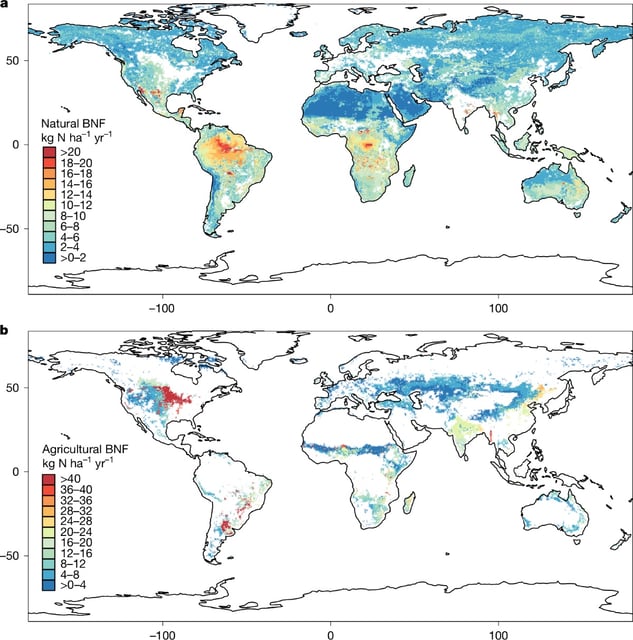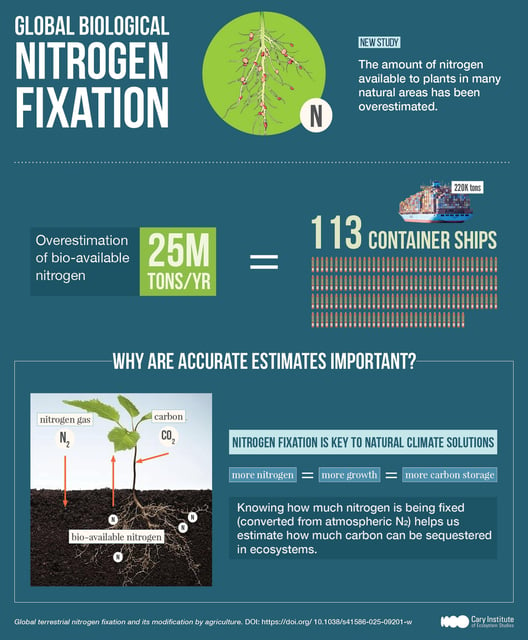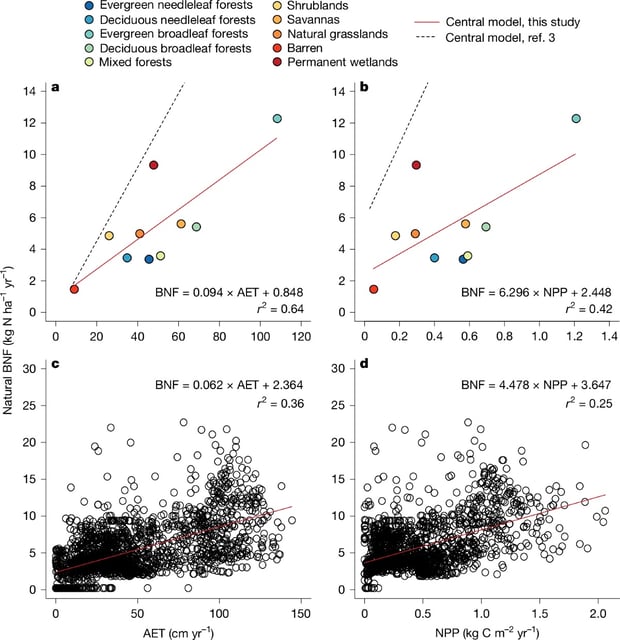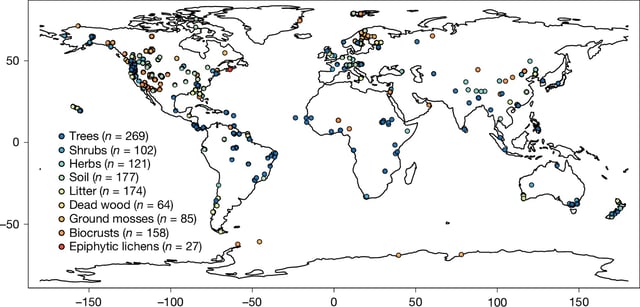Overview
- A Nature analysis finds natural terrestrial ecosystems deliver roughly 25 million tons less biologically fixed nitrogen each year than previous estimates indicated
- Researchers corrected sampling bias by integrating data from underrepresented habitats such as shrubs, mosses and dead wood and applying a new scaling algorithm
- Leguminous crops now drive a 64% increase in biological nitrogen fixation over pre-industrial levels, heightening risks of nutrient runoff, algal blooms and nitrous oxide emissions
- Reduced nitrogen availability reveals constraints on carbon sinks in biomes including prairies and temperate forests, potentially limiting their capacity to absorb CO₂
- The updated fixation rates will improve climate and environmental models, enabling more precise predictions of land-based carbon uptake and ecosystem responses



